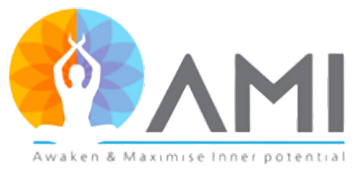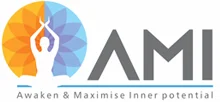
Authors: Shyamala Salian, Megha Dhargalkar.
Meditation: Usha Karnik, Seema Thakkar.
Asana photos: Monica Kapadia, R.Vedavalli and Sita.S.Iyer
How old is “old?” As you can see, there’s no simple answer to that question. Old age has been described as a time of freedom, happiness, and affluence. Conversely, old age is often characterized with physical disorders (organs, muscles/joints ,balance) ; mental decline (memory, concentration and focus) ; emotional (low confidence, anxiety) and social challenges (loneliness, insecurity, low confidence).
Each person’s experiences are unique.
To be clear, there is no set-in-stone way of knowing when someone becomes ‘old’. Ultimately, each of us must decide for ourselves.
Don’t accept the myth that aging always leads to deterioration and pain!!
Although we can’t arrest the aging process, there are ways to reduce its effects, helping you to continue to remain engaged and active during your senior years.
Yoga is a holistic and inexpensive option to navigate around the increasing challenges enabling restorative wellness.
Rapid strides in technology have revolutionized our lives. For instance, use of net banking needs cognitive intelligence (memory, concentration ,etc) for you to remember ID’s, passwords and so forth. It is also imperative for you to be in tune with technology advancements by ensuring you are keeping ‘amped up’ mentally.
Yoga poses (called asanas) can be easily adapted to suit individual needs and it is safe for seniors of all fitness or ability levels. And it’s never too late to begin: You can start yoga at any age. (Just be sure to clear it with your doctor before you start).
You don’t have to be super flexible to start your yoga practice – the beauty of yoga is that it can be adapted across capacity levels.
Many types of yoga practices are relatively mild and therefore safe for people when a well-trained instructor is guiding the practice.
On the social front, practicing yoga in a group class will help foster new friendships of people with a common mind-set and values. Also, group practice will motivate you to be consistent, generate a positive sense of competition to better your practice, learn from each other and is known to generate more energy that lasts even after the class.
Example of an extremely successful celebrity yoga practitioner is the musician Sting (71). He is recently back from retirement. Regarding his yoga practice he stated, “If anything, it’s reversing my aging process. I can now do things with my body that I wouldn’t even have thought possible when I was an athletic teenager.”

A lot of research exists to validate the mind-body-breath connection through yoga enhancing restorative physical, emotional, social and mental well-being.
Yoga is increasingly becoming an adjunct therapy to enhance the quality of life and also has healing qualities, enabling restorative wellness.
Yoga’s incorporation of Dhyana (meditation) and Pranayama (breath control) can help improve a person’s mental well-being. It can be said that Yoga induces restorative wellness by enabling healing at the cellular level. Regular yoga practice can create mental clarity and calmness; increase body awareness; relieve chronic stress patterns; relax the mind; centre attention; and sharpens concentration.
Interestingly, the US Department of Defence is starting to embrace non-traditional fitness and restorative wellness modalities such as yoga. This is to better help the men and women of the Armed Forces prepare for the stresses they’ll face during their service, and after it has ended. Initial findings bear out that such activities can have lasting, life-changing benefits for active-duty service members and retirees.
Overview:
- Regularly practicing yoga increases proprioception (e.g.: body’s ability to sense its movements, like able to touch your nose with eyes closed) and improves balance. Better balance and flexibility could mean fewer falls especially for the elderly and hence enhance quality of life.
- A study assigned 66 elderly participants to either practice yoga or calisthenics, a type of body weight exercise. After a year, total flexibility of the yoga group increased by nearly four times that of the calisthenics group
- It is a known fact that weight-bearing exercise strengthens bones and helps ward off osteoporosis. Many postures in yoga require that you lift your own weight. In an unpublished study conducted at California State University, Los Angeles, yoga practice also increased bone density in the vertebrae.
- With a combination of yogic practices, the joints are taken through their full range of motion, bringing fresh nutrients, oxygen and blood to the area, which helps to counteract conditions like arthritis and chronic pain. When you relieve your pain, your mood improves, you’re more inclined to be active, enhancing quality of your life due to restorative wellness.

- Yoga increases blood flow which allows for more oxygen to reach the body cells, enhancing their function. Twisting poses wring out venous blood from internal organs and allow oxygenated blood to flow in when the twist is released.
Below are some practices that will enable restorative wellness: –
Each asana has suggested adaptations to enable an easier start for beginners. Intent is for you to gradually move upwards from adaptation #2/1 to the original practice. Benefits will be better as you transition to original technique and hold the asana for longer duration.
Warm ups: Before commencing the practices do some warmups (6-8 repetitions each). Examples: curling and stretching toes, ankle /elbow/knee bends, shoulder shrugs, neck rotations etc.
Below are some asanas (postures) and Pranayama (breath focus) practices.
- Shadanan Mudra (6 neck movements) benefits nerves connecting the muscles in the neck. Avoid in case of cervical spondylosis or pain in the jaw.
Technique:
- Sit in a comfortable pose on a mat or chair with spine straight. Hands on knees.
- Turn your face to the right then towards left, come to center then up and down, come to the center and then lateral bend to right and then towards left.
- Each movement must be slow and relaxed, gradually extend hold time on each side.
- This practice benefits the shoulders and chest. Relieves cervical spondylosis and frozen shoulder.
2. Shoulder rotation benefits the shoulders and chest. Relieves cervical spondylosis and frozen shoulder.
Technique:
- Sit in any comfortable pose Padmasan or Sukhasan or on a chair with back straight
- Place the fingers-tips of right hand on the right shoulder and left on the left shoulder.
- Rotate the arms clockwise and then anti-clockwise. Start with 4-5 rotations and then gradually increase.
3. Simple practices to improve knee strength (repeat 5-10 times):
A. Sit on a chair or mat and:
- Raise one leg up. Leg straight in the knee
- Raise both legs up. Legs straight in the knees
- Place cushion or folded towel between the knees and thighs and press them against each other.
B. Take the support of wall. Stretch leg back, toe just above the ground, knee is straight, face is in the front (good for sciatica)
4.Tadasana (palm tree pose) Avoid if you suffer from vertigo, low blood pressure or have a severe headache. Helps improve focus and strengthen the nervous system. (Photos: Sita.S.Iyer)
Technique (original)
- Stand with your feet planted firmly on the ground, close to each other.
- Straighten the hands by the sides of your body & focus your attention to a point in front.
- Raise your heels and at the same time stretch arms upwards, balancing on your toes.
- Slowly bring the toes back to the floor and the hands down at same time. Repeat 2-3 times.

Adaptation #1: In case you find difficulty balancing, lean against a wall and do the practice. You can gradually improve your balance to be able to do the practice without support.

Adaptation #2: Sit on a chair with feet planted firmly on the ground, close to each other and follow the practice. Start this version only in case of lack of balance or if there is a risk of falling.

5.Hastapadasana: (Hand to foot pose) It is a forward stretch pose done standing. It signifies ‘letting go’. It refreshes the brain, calms the mind and lets go of stresses within. (Photos: Monica Kapadia)
Technique (original):
- Inhale raise the hands high and slightly backwards and bend forward with exhalation. Let the fingers or palms touch the floor or on either side of the feet or wherever you can reach.
- Try to keep the knees straight. To return gently raise the head and trunk. Repeat 2-3 times.

Adaptation #1: Stand at arm’s length distance facing a wall. Inhale raise the hands high and slightly backwards and bend forward with exhalation.
- Keep shoulders and arms in a straight line and rest the palms on the wall for better balance. Push the buttocks back and keep knees straight. To return gently raise the head and trunk. Repeat 2-3 times.

- Adaptation #2: Sit on a chair with feet planted firmly on the ground, close to each other. Inhale raise the hands high and slightly backwards and bend forward with exhalation. Let the fingers or palms touch the floor or on either side of the feet or wherever you reach. To return gently raise the head and trunk. Repeat 2-3 times.

6. Ardha Chakrasan (Half Wheel Pose). This asana strengthens the back and abdominal muscles and opens the chest. Avoid in case of high BP , abdominal issues or severe vertigo. (Photos: Sita.S.Iyer)
Technique:
- Stand straight and with palms behind the hips , fingers pointing downwards
- Slowly bend the upper part of your body , as far as you can go. Try to draw the elbows inwards so that the shoulder blades come closer.
- Remain in this position for few seconds to a minute, according to your capacity.
- To release the pose, bring back slowly to the standing position with hands on your side.

Adaptation #1: Stand with your back to a wall at an arm’s length distance (app 1.5 ft), hands upwards and rest your palms on the wall to keep the balance.

Adaptation #2: Do the practice seated on a chair, come a bit forward. Anchor feet firmly on the floor. Take your hands upwards and stretch backwards and hold. To release slowly straighten and bring hands down. Repeat 2-3 times.

7. Kati Chakrasan : A lateral bend for the spine and trunk, helps improve breathing. (Photos: Monica Kapadia)
Technique
- Stand with your feet planted firmly on the ground about 1.5 feet apart.
- Keep left hand on the waist and bend your body to the left , lifting the right hand up close to the right ear and palm facing the ceiling. Hold for 5 to 10 seconds and return. Repeat on opposite side.

Adaptation #1: Do the above practice leaning against a wall to retain your balance.
Adaptation #2: Do the practice seated on a mat in Sukhasan or Padmasan or on a chair.

8. Vakrasan (The Twisted Pose) Opens up chest, shoulder & neck. Tones the spinal nerves and the abdominal organs. Avoid in case of hips, shoulder or neck issues or recent abdominal surgery. (Photos: R.Vedavalli)
Technique:
- Sit on the floor with legs stretched out and hands resting on the floor by the side.
- Bend left leg with sole of the foot resting on the floor with the right leg stretched out on the floor.
- Twist the trunk towards the left and bring the right hand over the left leg to either hold the left shin, toe or ankle. Place the left hand behind, to support the weight of the body. The neck is twisted back from the left side, in line with the trunk.
- Maintain this final pose for as long as you are comfortable with normal breathing.
- To release inhale and come to centre. Repeat these steps on the right side.

Adaptation #1: Same as above except -twist the trunk towards the left and let the right hand hug the left knee.

Adaptation #2: Do the adaptation #1 seated on a chair, feet firmly resting on the floor. Twist the trunk to the left and rest the left arm on the back of the chair and the right hand resting on the left knee. Repeat on the opposite side.

9. Paschimottanasana (back stretching pose)
In this asana the complete back is stretched from the heels to the head. It tones and massages the entire abdominal and pelvic region and is very good for diabetes management. It also helps to remove excess fat in abdominal area and stimulates nerves and muscles of the spine. To be avoided in case of hernia, sciatica or uncontrolled hypertension. (Photos: R.Vedavalli)
Technique:
- Sit on the floor with legs outstretched, feet together and hands on the thighs. Inhale
- Raise your arms with inhalation and then bend forward from the hips with exhalation, sliding the hands towards the feet and grasp the big toe or ankles as per your capacity.
- Bend the elbows and gently bring the trunk down towards the legs. Normal breathing.
- Try to touch the knees with the forehead.
- To release, with inhalation take head up and slide hands back and come to the starting posture. This is one round.

Adaptation #1: Place a bolster cushion on the knees. Follow the above technique and rest your head on the cushion. The pillow will also help keep the knees straight.

10. Setu Bandhasana (Bridge Pose):
Relieves anxiety, fatigue, backache, headaches and insomnia. Relieves low back pain. (Photos: R.Vedavalli)
Technique (original)
Lie on your back; Fold your legs, feet on the floor. Little distance between knees and feet. Heels close to the buttocks.
- To release, slowly bring your hips down.

Adaptation #1: Keep a bolster cushion under the hips to raise them and rest palms as close to your heels as possible. This will help you hold the pose for longer time and help strengthen the back. Gradually improve capability to practice the original technique.

11. Anulom Vilom (alternate nostril breathing) It induces tranquillity, clarity of thought and concentration. Anulom vilom should be avoided while suffering from colds, flu or fever.
Technique:
- Sit comfortably on a mat or on a chair with back straight.
- Close the right nostril and breathe in from the left nostril. Close both nostrils and hold breath in. Then close left nostril and breathe out from the right nostril.
- Now breathe in deeply from the right nostril, close both nostrils, hold breath and then and breathe out from the left nostril. This is one round. Practice 5 to 10 rounds. Breathing must be slow, controlled and relaxed.
12. Bhramari Pranayama (humming bee breath): It induces a meditative state by harmonizing the mind and directing the awareness inward.
Technique:
- Sit in any meditative pose or on a chair with head and back straight, right palm resting on left in Padma mudra.
- Close the eyes and relax the whole body. Close the lips gently throughout the practice.
- Breathe in through the nose and exhale slowly and in a controlled manner while making a deep steady humming sound like a black bee. This is one round, repeat 8-10 rounds.

13. Ujjayi Pranayama (victorious or ocean breath): This Pranayama refreshes the brain, calms and stimulates the vagus nerve and the cranial muscles. The vibration sound created in the throat is calming and healing.
Technique:
- Sit in any meditative pose or on a chair with head and spine up straight, hands resting on the knees.
- As you inhale constrict the throat muscles so that there is a narrowing of the air passage, this creates a gentle snoring sound. Exhale following the same method of constricting the throat muscles also producing a gentle snoring sound. One inhalation and exhalation are one round.
- Practice for 10-12 rounds
Links for meditation practices:
- Visualization meditation (https://learn.amiyogaglobal.com/courses/guided-meditation-and-yoga-nidra/contents/61dfe2dbb7935)
- Harmony in the body – https://learn.amiyogaglobal.com/courses/guided-meditation-and-Yoga-Nidra/contents/61dfe15423ecc
As you meditate set up some self-affirmations in your mind e.g.: “I choose to be happy every day and make others happy”; or “ Every cell in my body responds to every thought – I think positive, peace filled loving thoughts”.…. Try creating some of your own.
Other practices you may try are Kriyas like Agnisaar which activates the solar plexus located in the abdominal area; Kapalbhati for clearing the nasal sinuses and mental activation; Jala neti for clearing the upper respiratory tract ; Trataka for focus and concentration…
Yogic practices enable unification of the physical body, breath, and concentration, resulting in clearing blockages in the energy channels of the body and thus balancing the body energy system. Also, these practices teach you to ‘let go’ and set out on the path of detachment.
Restorative postures, pranayama, and meditation encourage pratyahara, a turning inward of the senses which enables downtime for the nervous system, the by-product often being improved sleep , reduced stress and depression.
The various bending and stretching postures help energize the organs and also helps reduce issues like constipation.
Yoga is a better treatment versus medicines which are often associated with hazardous side effects like impaired mental function or movement or coordination, especially for the elderly. Of course , it must be practiced under the guidance of experts.
Inevitably ageing does alter your body parameters. Overall, these age-related deteriorations are slower in persons who practice yoga regularly. Many studies show that yoga lowers the resting heart rate, increases endurance, and can improve the maximum uptake and utilization of oxygen during exercise.
Overall yoga offers a holistic path of mind-body healing. Yogic practices don’t just profoundly impact your life but also add healthy years to it !!
To learn more, get in touch with us at https://amiyogaglobal.com/old .
References:
- Asana, Pranayama, Mudra, Bandha by Swami Satyananda Saraswati
- Healthline.com – 13 benefits of yoga that are supported by science
- Yogajournal.com – 38 benefits of yoga
- Osteopathic.org – Benefits of yoga / American osteopathic association
- Giphy for animated photo and wikipedia
- https://awaken.com/2021/02/15-famous-men-who-do-yoga/
- https://www.athleticbusiness.com/article/15280564/military-harnesses-healing-power-of-yoga-meditation



